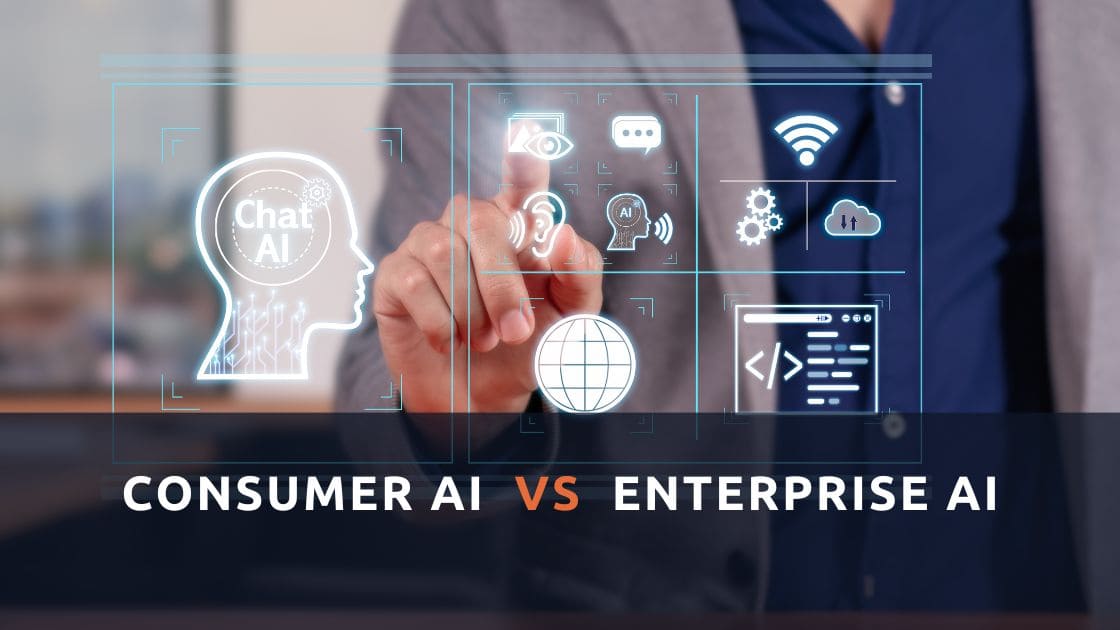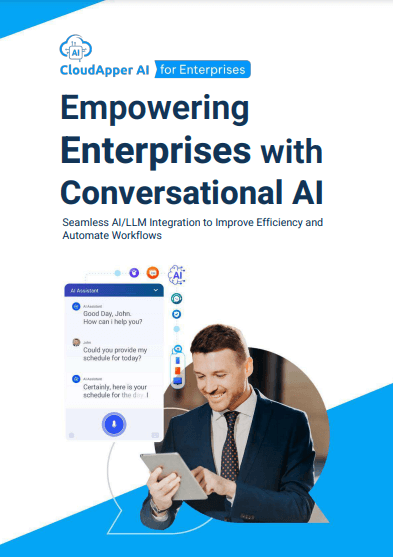Dive into the realms of Consumer AI and Enterprise AI, revolutionizing customer experience and organizational technology. CloudApper AI excels in both, enhancing CX with personalized interactions and streamlining HR processes for an empowered workforce, driving innovation across sectors.

In the ever-evolving landscape of artificial intelligence (AI), two prominent players have emerged, each with its unique role and impact – Consumer AI and Enterprise AI. Gone are the days when AI was confined to research labs; it has now permeated the realms of consumer engagement, sales, profitability, and productivity. Understanding the distinction between Consumer AI and Enterprise AI is crucial as businesses harness these technologies to drive innovation and efficiency.
Consumer AI: Elevating Customer Experience and Product Enhancement
Consumer AI unfolds in two distinct dimensions: a) understanding customer behavior to improve Customer Experience (CX); b) leveraging data to enhance products. Early adopters, exemplified by tech giants like eBay, have witnessed substantial gains. By analyzing extensive data sets, eBay achieved a breakthrough in personalization, scaling it to every customer based on profound insights derived from 500 metrics and 50 petabytes of data.
Machine learning techniques, a subset of Consumer AI, have superseded statistical modeling, particularly in the financial domain. In consumer product industries, AI plays a pivotal role in driving new product features and achieving mass personalization through pattern recognition in large datasets. The rise of chatbots, categorized into front-end AI (bots) and AI-assisted human agents, is a notable manifestation, with 80% of sales and marketing leaders acknowledging their contribution to improving customer experience.
AI’s impact on CX extends to Responsive Retail, robo-advisors in banking, AI-powered shopping assistants in e-commerce, and more. Consumer AI has become a game-changer, with predictions of a transformative impact on customer experience.
CloudApper AI enhances Customer Experience with cutting-edge Consumer AI. By seamlessly integrating into various industries, it revolutionizes CX through personalized interactions, automates responses, and predicts customer needs, ensuring businesses stay ahead in delivering exceptional services.
Enterprise AI: Dominating Organizational Technology
The enterprise landscape witnesses the dominance of AI, shaping the Enterprise Resource Planning (ERP) ecosystem significantly. Focused on organizational outcomes, Enterprise AI has grown to become a dominant force in the market. It tackles complex challenges, automating mundane tasks, performing root cause analysis, and contributing to streamlined processes.
While Consumer AI interfaces directly with customers through messengers, emails, websites, and apps, Enterprise AI is more organizational-centric, emphasizing quantifiable end value for companies. It requires deep domain expertise, often using supervised learning techniques to achieve KPI-oriented results. Notably, Enterprise AI has found its footing in areas like automated marketing budgets, fraud detection, improving employee experience and customer value prediction in sales.
CloudApper AI elevates Employee Experience through advanced Enterprise AI solutions. It streamlines HR processes, provides instant support, and automates tasks, ensuring a seamless, efficient, and empowering work environment for enhanced productivity and job satisfaction.
The differentiation is clear: Consumer AI targets a better customer experience, leveraging interfaces as its primary focus, while Enterprise AI concentrates on creating and optimizing intelligent products and solutions within organizations. 94% of business leaders think that AI will be important for business success in the next five years, according to Deloitte’s State of AI in the Enterprise, 5th edition, published in 2022.
In conclusion, the dual forces of Consumer AI and Enterprise AI are steering innovation and efficiency across diverse sectors. Recognizing the unique characteristics of each variant is vital for businesses seeking to unlock the full potential of artificial intelligence in their respective domains. As we move forward, the symbiotic relationship between Consumer AI and Enterprise AI will continue to redefine how industries operate and deliver value.

CloudApper AI Solutions for HR



- Works with
- and more.













